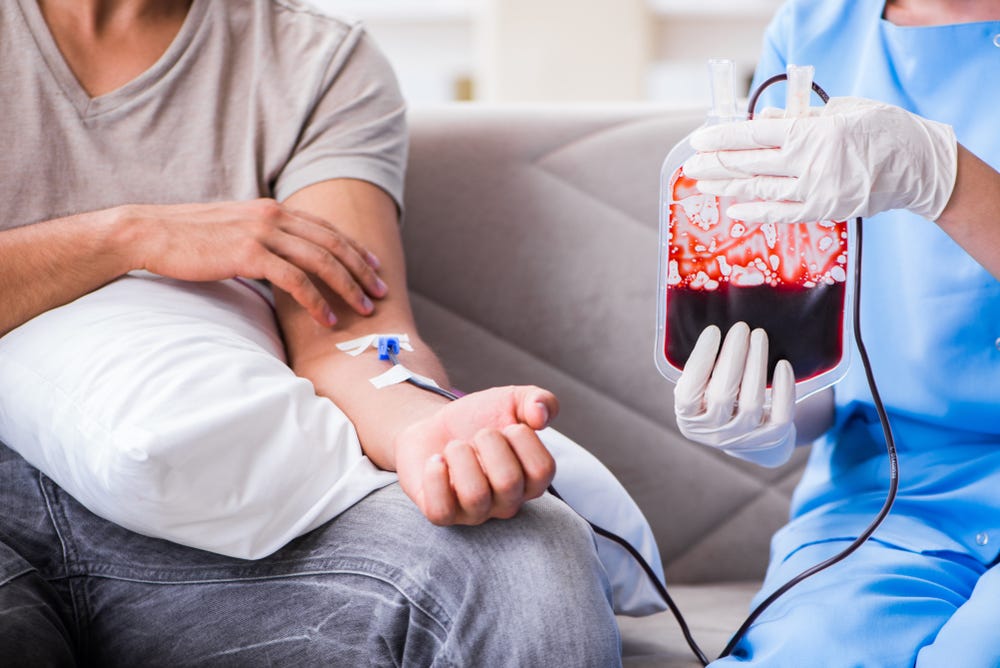Researchers slow aging through younger blood transfusions
We anticipated beneficial effects of prolonged exposure to young circulation, but we were surprised to see the lasting effects we observed

[July 28, 2023: Staff Writer, The Brighter Side of News]
Recent studies have illuminated the profound potential for young blood to rejuvenate older organisms. (CREDIT: Creative Commons)
Recent studies have illuminated the profound potential for young blood to rejuvenate older organisms. Using a technique known as parabiosis, which fuses the circulatory systems of two animals, scientists have successfully increased the lifespans of geriatric mice by a significant 10 percent.
This groundbreaking research conducted at the Duke University School of Medicine and the Duke Aging Center was led by James White, a renowned professor of medicine and cell biology. "The parabiosis procedure connects tissues between the two mice, which quickly fuse and start sharing circulation." He goes on to clarify that after the study's observations are made, "The detachment procedure simply separates these connections, and the mice quickly recover to live separately for the rest of the study."
White's research, detailed in the esteemed journal Nature Aging, dove deeper into the anti-aging implications of parabiosis, probing into the durability of these benefits once the animal pairs were disconnected.
"We anticipated beneficial effects of the prolonged exposure to young circulation, but we were surprised to see the lasting effects we observed," an enthused White remarked.
Related Stories:
Two months post detachment, older mice (termed heterochronic in the study) that had previously been linked with younger counterparts displayed signs of slowed biological aging, a phenomenon conspicuously absent in control groups.
White elaborated on this fascinating observation, "These results suggest a possible cellular reprogramming over time to a more youthful state, which can be maintained even after the cessation of young blood."
It's important to note that the allure of young blood's anti-aging properties isn't a novel concept. Rewind to 2017, and we find a Californian startup, Ambrosia, which dealt in the liquid component of young blood, selling it for a whopping $8,000 per liter. This venture was, however, short-lived, with the FDA's warning in 2019 causing its termination. Yet, the essence of the hypothesis persisted, seeding further investigations, like White's.
Prolonged parabiosis followed by detachment leads to extended life span and health span. (CREDIT: Nature Aging)
Furthermore, parabiosis as a technique isn't contemporary either. Tracing back to the 19th century, this method found its debut in the anti-aging domain only in 2005, thanks to pioneers from Stanford University.
Beyond Rejuvenation
Beyond the visible cellular rejuvenation, older mice showcased enhanced physiological prowess post-procedure. Remarkably, they also outlived their non-experimental counterparts by 10 percent. "Based purely on this study, the extension in lifespan would equate to about five to seven human years," commented White.
The transcriptomic signatures of HPB align with longevity interventions and oppose aging. (CREDIT: Nature Aging)
The enigma, however, persists. The intricacies of this "anti-aging" marvel remain elusive. Although younger cells coupled with "youthful factors" such as proteins and metabolites seem to be at play, the exact combination unlocking this fountain of youth remains unidentified.
"The therapeutic angle is finding the 'youth factors' in the young circulation responsible for these effects," White elucidated, further highlighting the impracticality and ethical issues associated with heterochronic transfusions.
Dimensionality reduction highlights rejuvenated molecular profiles after HPB. (CREDIT: Nature Aging)
The Future of Aging
The ultimate question that looms is: how close are we to unraveling the mysteries of aging? To modifying, or even reversing, its relentless course?
"Recent breakthroughs are supporting the idea that it's possible to separate chronological age from biological age," White asserted with optimism. "How much is still unknown, but we now know there is inherent capacity to reset our biological aging at the cellular level. We will soon see how far we can slow or reverse aging."
While the veritable elixir of youth remains shrouded in mystery, the strides made by scientists like White carve out a hopeful path. Perhaps, in the not-so-distant future, the boundary between science fiction and reality might blur just a little more.
Note: Materials provided above by The Brighter Side of News. Content may be edited for style and length.
Like these kind of feel good stories? Get the Brighter Side of News' newsletter.



